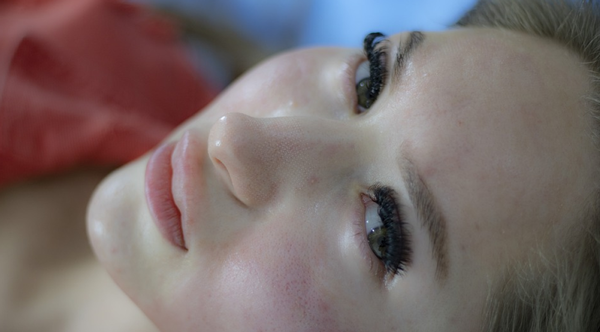Return To Blog
4 Reasons Why Radiofrequency Microneedling Is So Effective For Skin Conditions
Acne scars, wrinkles, and stretch marks are some of the most common skin conditions that people want to improve or treat. But effective treatments for these
skin conditions are not as common.
Enter radiofrequency (RF) microneedling.
This cosmetic procedure is said to dramatically improve the appearance and texture of the skin. Below, we’ll talk about what radiofrequency microneedling is and how
it rejuvenates the skin.Â
What is radiofrequency microneedling?
Radiofrequency microneedling is a cosmetic procedure that uses tiny needles and radiofrequency waves to prompt the derma, a deeper layer of the skin, to rebuild.
The small punctures from the needles trigger your skin’s natural healing response, which involves producing more collagen and elastin. This procedure is also called
collagen induction therapy.
Some dermatologists use RF microneedling to address skin concerns such as the following:
people have RF microneedling on their face, it can also be done to other parts of the body.Â
Why is RF microneedling effective for skin conditions?
What makes radiofrequency microneedling so effective even in treating various skin concerns? Here are the top 4 reasons why.
Microneedling increases the production of collagen.
Microneedling is a form of controlled trauma that improves skin quality because of the skin’s healing response. That is how microneedling boosts the production of
the essential protein, collagen. Collagen keeps the skin firm, smooth, and stretchy— the qualities of youthful skin. In short, collagen is what gives you that
youthful glow.
The collagen in our skin declines as we age. This contributes to the development of wrinkles and other signs of aging. Collagen loss may also be caused by injuries such as acne scarring, stretch marks, and other types of scars.
While RF microneedling has minimal risk and downtime, it is important to note that this procedure is not an instant nor a quick fix since it involves the growth of
new skin. It takes 3 to 6 months to see the results of RF microneedling, depending on the severity and type of skin condition you are treating. Additionally, it takes
more than one session to achieve results.
RF microneedling encourages tissue tightening.
Besides collagen, RF microneedling also stimulates the production of elastin. Elastin gives the skin its elasticity. In other words, elastin is the reason why your
skin goes back to its original shape when it is poked or pinched. Elastin is found in the dermis, or the middle layer of the skin.
Just like collagen, we lose elastin as we age. This is the reason why we have saggy skin as we grow older. It is also one factor that causes wrinkles and fine lines. The
good news is that RF microneedling boosts the production of elastin, so that skin can regain more of its elasticity.Â
RF microneedling is safe for people of every skin color.
People who struggle with acne scars are often told that chemical peels and lasers will help them get rid of the scars. However, these treatments can actually do more
harm than good for individuals with darker skin complexion. That’s because the energy delivered by lasers is chromophore-dependent, or influenced by skin color.
Luckily, RF microneedling is a “color blind†procedure. Radiofrequency waves do not emit energy based on the color of your skin. RF microneedling simply treats the
target area with the appropriate depth and amount of energy necessary for your skin condition.
Radiofrequency waves improve skin complexion.
Radiofrequency waves simply produce heat. But this heat is helpful because, just like the little punctures caused by tiny needles, it also causes skin to produce more
collagen. In fact, some dermatologists use RF therapy to treat wrinkles and fine lines on their patients.
With RF microneedling, you have the combined effects of tiny needles and radiofrequency waves in improving your skin’s complexion and texture. Naturally,
this leads to a more significant improvement in skin conditions.
Considerations in RF microneedling
The risks involved with RF microneedling are minimal. Usual side effects include skin irritation and dryness. But there are also some potential serious risks. For
instance, you might develop an allergic reaction to the medication that was deposited through microneedling. Additionally, you might develop infections if you
are exposed to irritating soaps, lotions, or places with lots of germs such as swimming pools. That’s why it is important to stay away from these places while
your wounds from microneedling heal, which usually takes 3 weeks. Getting a professional RF microneedling is key to managing and eliminating these risks.
Conclusion
RF microneedling is a minimally invasive cosmetic procedure that stimulates the skin to produce more collagen and elastin. This leads to tighter tissues and a
smoother complexion. This procedure is safe for all skin colors. There is also little risk involved with the procedure, and getting a professional radiofrequency
microneedling treatment can greatly reduce risks.
Â
skin conditions are not as common.
Enter radiofrequency (RF) microneedling.
This cosmetic procedure is said to dramatically improve the appearance and texture of the skin. Below, we’ll talk about what radiofrequency microneedling is and how
it rejuvenates the skin.Â
What is radiofrequency microneedling?
Radiofrequency microneedling is a cosmetic procedure that uses tiny needles and radiofrequency waves to prompt the derma, a deeper layer of the skin, to rebuild.
The small punctures from the needles trigger your skin’s natural healing response, which involves producing more collagen and elastin. This procedure is also called
collagen induction therapy.
Some dermatologists use RF microneedling to address skin concerns such as the following:
- Wrinkles
- Scars and acne scars
- Alopecia
- Rosacea
- Hyperpigmentation
- Large pores
- Fine lines and wrinkles
- Stretch marks
- Sun damage
people have RF microneedling on their face, it can also be done to other parts of the body.Â
Why is RF microneedling effective for skin conditions?
What makes radiofrequency microneedling so effective even in treating various skin concerns? Here are the top 4 reasons why.
Microneedling increases the production of collagen.
Microneedling is a form of controlled trauma that improves skin quality because of the skin’s healing response. That is how microneedling boosts the production of
the essential protein, collagen. Collagen keeps the skin firm, smooth, and stretchy— the qualities of youthful skin. In short, collagen is what gives you that
youthful glow.
The collagen in our skin declines as we age. This contributes to the development of wrinkles and other signs of aging. Collagen loss may also be caused by injuries such as acne scarring, stretch marks, and other types of scars.
While RF microneedling has minimal risk and downtime, it is important to note that this procedure is not an instant nor a quick fix since it involves the growth of
new skin. It takes 3 to 6 months to see the results of RF microneedling, depending on the severity and type of skin condition you are treating. Additionally, it takes
more than one session to achieve results.
RF microneedling encourages tissue tightening.
Besides collagen, RF microneedling also stimulates the production of elastin. Elastin gives the skin its elasticity. In other words, elastin is the reason why your
skin goes back to its original shape when it is poked or pinched. Elastin is found in the dermis, or the middle layer of the skin.
Just like collagen, we lose elastin as we age. This is the reason why we have saggy skin as we grow older. It is also one factor that causes wrinkles and fine lines. The
good news is that RF microneedling boosts the production of elastin, so that skin can regain more of its elasticity.Â
RF microneedling is safe for people of every skin color.
People who struggle with acne scars are often told that chemical peels and lasers will help them get rid of the scars. However, these treatments can actually do more
harm than good for individuals with darker skin complexion. That’s because the energy delivered by lasers is chromophore-dependent, or influenced by skin color.
Luckily, RF microneedling is a “color blind†procedure. Radiofrequency waves do not emit energy based on the color of your skin. RF microneedling simply treats the
target area with the appropriate depth and amount of energy necessary for your skin condition.
Radiofrequency waves improve skin complexion.
Radiofrequency waves simply produce heat. But this heat is helpful because, just like the little punctures caused by tiny needles, it also causes skin to produce more
collagen. In fact, some dermatologists use RF therapy to treat wrinkles and fine lines on their patients.
With RF microneedling, you have the combined effects of tiny needles and radiofrequency waves in improving your skin’s complexion and texture. Naturally,
this leads to a more significant improvement in skin conditions.
Considerations in RF microneedling
The risks involved with RF microneedling are minimal. Usual side effects include skin irritation and dryness. But there are also some potential serious risks. For
instance, you might develop an allergic reaction to the medication that was deposited through microneedling. Additionally, you might develop infections if you
are exposed to irritating soaps, lotions, or places with lots of germs such as swimming pools. That’s why it is important to stay away from these places while
your wounds from microneedling heal, which usually takes 3 weeks. Getting a professional RF microneedling is key to managing and eliminating these risks.
Conclusion
RF microneedling is a minimally invasive cosmetic procedure that stimulates the skin to produce more collagen and elastin. This leads to tighter tissues and a
smoother complexion. This procedure is safe for all skin colors. There is also little risk involved with the procedure, and getting a professional radiofrequency
microneedling treatment can greatly reduce risks.
Â

